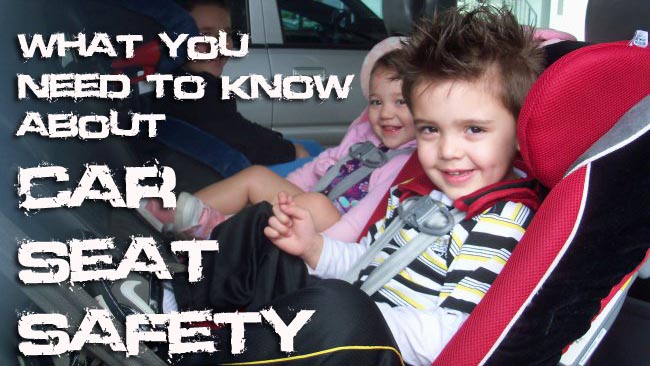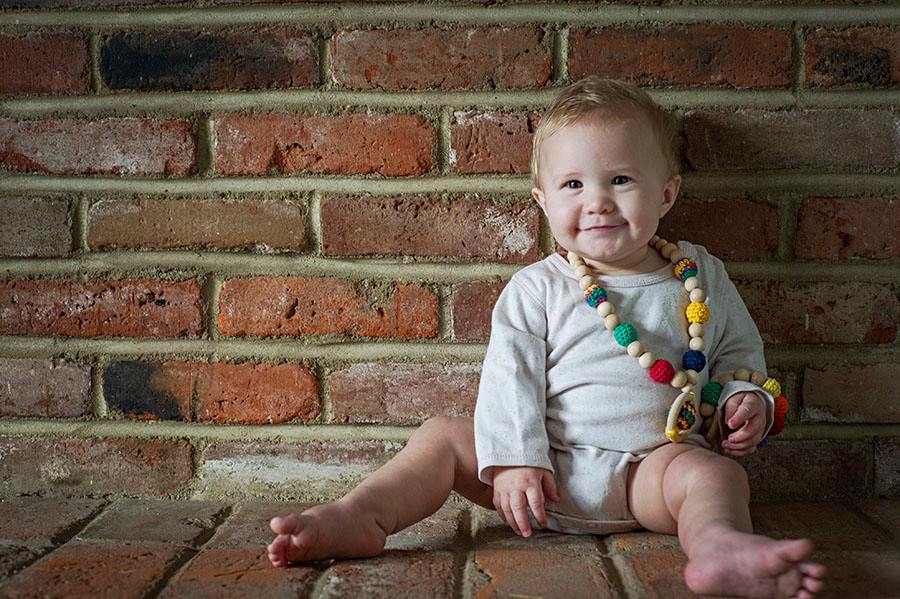[This is another guest post from my good friend Bree. She doesn’t blog often, but when she does her posts are great! If you enjoy what you read, head over to her blog and let her know that you want some more!]
My name is Bree and I’m a certified Child Passenger Safety Technician or “CPST”. I’ve been certified for 5 years but have been into car seat safety for about 6 years. I haven’t always been into it; when I had my oldest, I was totally clueless and did pretty much EVERYTHING wrong. It wasn’t until I watched some videos on YouTube that my eyes were opened.
Car crashes are the #1 killer of children between the ages of 1 and 14. People always ask me “well, what about the children under 1 or over 14?”
The reason why car crashes aren’t the #1 killer for children under a year old is because they are rear-facing. I’ll go into why RF is safer in a moment.
And then, on the other side of the spectrum, car crashes aren’t the number one killer of children over 14 because their bones have matured and can fit into a seat belt correctly. And I’ll get into that in a little bit too.
But first things first.. Let’s talk about laws because a lot of people assume that if something is a law, it must be safe, right? Wrong.
The law here in CA for rear-facing is 1 year old and 20lbs. So, that means you can legally turn your baby forward facing at that age. However, that law is extremely outdated (it’s been around since I was a baby and obviously A LOT has changed since then as far as advances in technology and equipment). Check HERE for YOUR state law!
First thing to realize about laws is that they are minimums. Even the American Association of Pediatrics has stated to rear-face until at least 2 years old AND 30lbs. But again… that is their minimum. So, who do we go to next? who would know more than the AAP? How about the NHTSA? The National Highway Traffic and Safety Administration. They are the ones who test our vehicles and have the crash test dummies and know EXACTLY what can happen. I think I’ll listen to them. After all, they’re the one going through all the research, right?
So, what does the NHTSA say? They say to rear-face until at least 4 years old OR until the maximum limits of your child’s seat.
What’s so special about 4 years old? That is when the spine starts to ossify (which means when it starts to harden and close). Children under 4 years old, have a very flexible and soft spine. Add that soft spine to a disproportionate head to body ratio and you have a recipe for what’s called internal decapitation. And yes, it’s as gruesome as it sounds. It’s when the spinal cord detaches from the skull internally. Which typically leads to paralysis or death.
A lot of people think “well, how the heck can I rear-face them for so long?? Won’t they get squished? Where do their legs go? I can’t afford an expensive seat. etc.” okay, well, lets nip the “I can’t afford a good Extended Rear-facing seat”. You can get an ERF seat for as little as $70! And while even that is a lot to some people, it’s do-able.
How about where their legs go?
Much like when you’re in a recliner and can prop up your legs, that’s what rear-facing children do. They prop their legs up, sit crisscrossed, sometimes I’ll see kids throw their legs of the sides of their seats, etc.
A lot of people worry about broken legs while ERF. And while it *IS* a possibility, that’s actually one of the most common injury for FORWARD facing children, not rear facing. And even then, I’d much rather have my child have a broken leg than have a broken neck.
What makes rear-facing safer?
Well, like I said before, children’s heads are so disproportionate to their bodies. They’re very top heavy. It’s like sticking a golf ball on a toothpick.
Before children are 2 years old, their head accounts for 1/4 of their height.
It isn’t until the child is about 6 years old that their head is more proportionate… which also happens to be the age when the spine is usually done ossifying.
What RF does for these disproportionate bodies is take the brunt of the force an spread it out in the car seat instead of your child’s spine.
A lot of people say, “well, my child is big for their age.”..
It doesn’t matter, their BONES are still the same age. Just because your 2 year old is as big as a 4 year old does NOT mean their bones matured any faster, they’re still the bones of a 2 year old. The 4 year old’s bones are much more mature and stronger than a 2 year old’s no matter how big that 2 year old is.
Then the second most common argument I get is: “well, what if I get rear-ended? Won’t it be the same as if they were forward-facing?”
The short answer is no. While movement is similar, the difference between the two types of crashes are quite different.
Typically, when you’re rear-ended it’s at a slower speed. But the main difference is on how the car moves.
When you’re rear-ended you car moves WITH the crash and disperses the crash throughout. But when you’re hit head-on, you’re at a dead stop instantaneously and ALL that force is on the passengers.
So, no matter what.. rear-facing is ALWAYS safer.
Rear-Facing Rules
-harness straps must be AT or BELOW the shoulders. This keeps the child from “ramping up” in the seat and allowing their head to go up above the car seat’s shell.
-for newborns and younger babies with poor head control, the car seat must be installed at a 45 degree angle. When the child is older, you can install it more upright, as inclined as 30 degrees (with the exception of some seats).
-harness must be “sung as a hug” and you should not be able to pinch any slack at the shoulders.
-the chest clip must be at arm pit level.
-do not allow the harness to be twisted.
-the installed seat should not move more than 1” side to side at the belt path. ONLY check at the belt path. It is OKAY for the top of the seat to move. This is normal.
-a rear-facing seat is outgrown when either of these things happen:
-your child exceeds the weight limit
-your child has less than 1” of shell above their head
So, what’s next after rear-facing?
Forward-facing in a harness.
The highest harness weight capacity right now is 90lbs. However, that’s kind of over-kill for a harness, so most seats go to 65lbs. forward-facing.
The reason I say that 90lbs. is over-kill is because by the time a child is 90lbs., they should be mature enough to be in a booster. And maturity is where having a child in a forward-facing car seat with a harness is important.
Technically speaking, a 40lb. 4 year old is perfectly safe in a booster BUT.. and it’s a big BUT.. that’s ONLY if they can sit correctly in the booster 100% of the time. The majority of kids that age aren’t mature enough to understand that. So, being in a harness is key to keeping them safe. It’s only when the child is MATURE enough to move into a booster… which usually isn’t until about 6 years old. So, basically it’s safe to move them out of the harness as long as they’re over 4 years old, over 40lbs. AND mature enough.
Forward-Facing Rules
-harness straps must be AT or ABOVE. If they are below the shoulders, it will compress their spine in a crash.
-harness must be “sung as a hug” and you should not be able to pinch any slack at the shoulders.
-the chest clip must be at arm pit level.
-do not allow the harness to be twisted
-the installed seat should not move more than 1” side to side at the belt path.
-always use the Top Tether. This reduces head excursion.
–a forward facing seat is outgrown when ANY of these three things happen:
-your child exceeds the weight limit
-your child’s shoulders are above the last harness slot
– the top of their ears are above the shell
So, that leads us to boosters.
There are two types of boosters. High Back Boosters and No-Back boosters.
Is one safer than the other? Yes and no. The high back booster offers side impact protection because it has head wings and also protects the torso area. The no back booster still positions the seat belt in the correct position, but there’s nothing there protecting the head and body.
The reason why boosters are needed is because seat belts are actually designed for a full-grown ADULT. So, if a child sits in a seat belt without a booster, it will not fit them correctly. Chances are, is that the shoulder portion will be across their neck and the lap portion will be across their stomach instead of their hips.
What happens when the lap portion is too high on the stomach is what’s called “seat belt syndrome”. The soft belly is not strong enough to withstand the forces of a crash. If the lap belt slides up over the hip bones and into the soft belly, the lap belt can cut through the belly all the way to the spinal cord causing injuries to the spinal cord and the soft organs in the belly. It’s seen most often in 4-10 year olds who are not riding in booster seats – although it can be seen in anyone when the lap belt rests on the belly.
BOOSTER RULES
-child is over 4 years old and at least 40lbs. AND mature enough to sit still.
-positions the shoulder belt in the correct place (between the shoulder and clavicle).
-positions lap portion low on the hips.
-do not let the belt be twisted
-when using a backless booster, your child MUST had a headrest up to at least the tips of their ears.
-you can only use a booster in a position that has both the shoulder and lap belts. You CANNOT use a lap belt only.
The law here in CA states that a child can move out of a booster at 8 AND 80lbs. or 4’9”. However, most children need a booster until 10 to 12 years old OR when they can pass the 5-step test:
1. Can they sit all the way back?
2. Can they bend their knees at the edge of the seat?
3. Does the belt fit correctly across the shoulder?
4. Is the lap portion of the belt low on the hips?
5. Can they sit correctly the entire trip?
Miscellaneous Car Seat Rules
-ALWAYS READ YOUR MANUAL!!!
-Car seats expire. Most have a 6 year expiration date, some are more.
-Don’t use aftermarket products. It voids the warranty on your seat and it is not tested with those products. So, you’re using your child as a crash test dummy.
-You cannot use LATCH and the seat belt together. Using both puts too much pressure on the seat and actually cause the harness to rip out of the shell of the car seat in a crash.
-Do not have your seat checked at a fire house or police station. Find a certified CPST through safekids. Most police and fire stations do not have someone certified and if they do, they generally aren’t up to date on the latest recommendations and aren’t familiar with every seat.
-Do not listen to your child’s pediatrician when it comes to car seat safety. Again, chances are, they are not a certified CPST. It’d be like taking you car to get fixed at the dentist. You car doesn’t need a dentist. It needs a mechanic. Same with car seat issues. You don’t need a doctor, you need a CPST.
-Do NOT buy a used car seat off of craigslist, ebay, etc. If you can’t trust the seller with your child’s LIFE, don’t buy a used seat. There is nothing wrong with reusing a seat from a previous child or using a seat from a family member or close friend that you TRUST. The problem with buying off craigslist (and the like), the majority of people on that site are there to make a quick buck. They will lie you about the condition and the care of the car seat.
-You MUST replace your child’s car seat after ANY accident (some companies have different rules, so make sure to refer to your manual if you’re unsure).
-Click HERE to learn how to properly clean a car seat!
Okay, well that leads us to YOUR safety and general safety in the car.
#1 wear your seat belt correctly. Your shoulder belt should lay between your shoulder and clavicle. And the lap portion should be as low as it can go, laying flat across your thighs. Don’t allow the belt to be twisted.
#2. keep your feet on the floor.
#3. no projectiles. If you don’t want that object thrown at your child’s face, put it under the seat or even better: in the trunk if you have one.
#4. pets. buckle them up! There are only a few pet harnesses that are crash tested, so shop wisely. However, ANYTHING is better than nothing.
#5. keep up with vehicle maintenance (make sure you’re tires are good, oil is checked, fluids, etc.)
#6. don’t use your cell phone
#7. Be aware of your airbags. When driving, sit as far back as your can and put your hands at 9 and 3 or lower. When you were first learning to drive you were probably told 10 and 2, but studies have shown that this is unsafe. It actually puts your arms right in the path of the airbag! When you’re a passenger, sit as far back as possible. Do not put your feet on the dash and do not lean forward.
#8. sit upright. each recline notch makes you 5% less safe
#9. go the speed limit
#10. You must have a head rest up to at least the tips of your ears.
#11. you’re only as safe as the most dangerous person on the road.
And that’s what you missed! If you have any questions or would like your seat checked, don’t hesitate to ask! Feel free to copy and save these notes or share it!
[Bree Buckley is a happily married stay at home mother of four living in Lemoore, California. She is a crunchy momma, a certified Child Passenger Safety Technician and an occasional blogger. Go send her some love!]






Thanks Bree! Good stuff!
Help me bug her into posting more often! Haha..
it’s really hard to keep them rear facing when their legs are all doubled up. I made it to almost two with Ian, but I broke at like 19 or 20 months when his legs were all folded.
You should read Bree’s section on leg length in the post! 😉